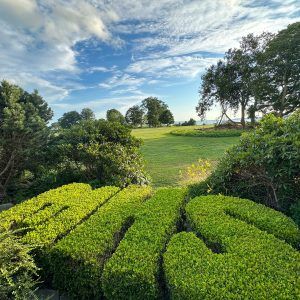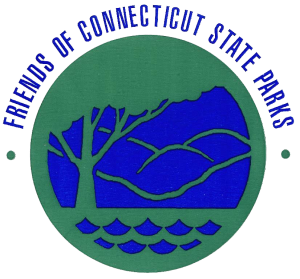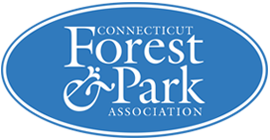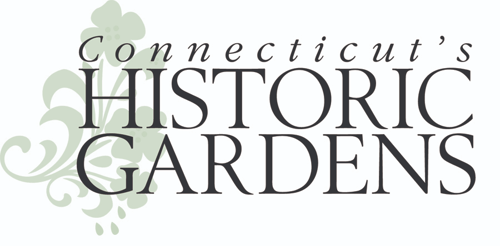About the Park
Harkness Memorial State Park is the former estate of Edward Stephen Harkness and his wife Mary Stillman Harkness. Edward and Mary were the beneficiaries of a fortune amassed by Edward’s father Stephen V. Harkness, who was a silent partner of John D. Rockefeller in the Standard Oil Corporation. During their lifetimes, Edward and Mary donated an estimated $200 million ($2 billion in today’s dollars) to innumerable charitable, cultural, educational, and health related organizations. In Connecticut, their generosity is reflected in buildings donated to Connecticut College, Yale University, and Trinity College.
In 1950, a widowed Mary Harkness, at age 76, provided in her will for ongoing rehabilitation of the disabled. Upon her death, the Harkness Estate was bequeathed to the people of the State of Connecticut and became a State Park in 1952. In the 1980’s, management responsibilities for the property were divided between the Department of Environmental Protection, now DEEP, and the Department of Mental Retardation, now DDS. DEEP today governs the grounds, gardens and buildings of Harkness proper. DDS supervises Camp Harkness.
The Harkness’s generous gift of the Harkness estate to Connecticut’s people was certainly a magnificent one. Besides its beautiful early 20th century buildings and spectacular natural landscape, it is Harkness’s built landscapes or formal gardens, designed by Beatrix Farrand and Marian Coffin , that are probably the most significant part of the gift deeded to citizens.
A quarter million visitors each year delight in this incomparable venue, sharing an “inheritance” from two of the twentieth century’s most open-handed philanthropists.
Harkness Today
Much of the Park’s historic distinction is attributed to Eolia, the grand former summer home of philanthropists Edward and Mary Harkness, and its surrounding gardens and greenhouse. This Gatsby-era mansion is among the best remaining examples of the grand seaside estates that once occupied the Sound’s shoreline at the beginning of the twentieth century. The Park’s meticulously maintained grounds feature spectacular formal gardens, expansive lawns, and picnic areas, a rock filled sandy beach, , and panoramic views of the Sound. Situated on Goshen Point, Harkness Memorial State Park is amongst the most spectacular sites on the East Coast, with lengthy coastline and panoramic sea views. The property boasts bucolic colonial-era fields, stone walls, and buildings associated with the ancestors of the Park’s donor, Mary Stillman Harkness . The park includes 237 acres of gardens, groves, beaches and tidal marshes, with some 60 buildings, 15 of which are listed on the National Register of Historic Places. From its vast lawns, Fishers Island, Great Gull, Little Gull, Plum Island and the North Fork of Long Island can be seen.
The Dr. William A. Niering wildlife area surrounding Goshen Cove on the west side of the estate is a paradise for birders. The 31-acre preserve, managed as part of Harkness, is an unusual mix of landscapes within a relatively small area characterized by a long narrow beach, low sand dune, salt marsh and saltwater cove, as well as coastal grassland. In 2000, the preserve was renamed from Goshen Cove to honor the late William Niering, PhD, a renowned botanist and wetland ecologist at Connecticut College, and his lifetime of dedication to natural science research, education, and conservation of Connecticut’s natural heritage. Protected beach dune areas are provided for the rare and threatened Piping Plover and Least Terns.
Nearby the osprey, returning from their winter homes in the south, will nest on several platforms in the marshlands. There are four distinct ecological habitats: dunes, barrier beach, salt marsh, and grasslands. A rare sea level fen dominated by the tall switch grass can be seen along the upland border of the tidal wetland. The barrier beach, known as The Strand, supports two state-threatened bird species, (piping plover and least tern) as well as a plant on the State list of special concern, the sea beach sandwort.
A saltwater cove, protected by a shrub thicket and grasslands on either side, offers a protected habitat for finfish and shellfish.
The eastern portion of the former estate is now devoted to Camp Harkness, one of the few State properties in the nation devoted to the exclusive use of citizens with special needs.
History of the Harkness Estate
Originally a 237-acre working dairy farm with a herd of prize Guernsey cows, the Eolia estate had 65 employees, 35 of whom were year-round support staff. In addition to its stunning floral gardens, designed by Beatrix Farrand and later Marion Coffin, the estate featured vegetable gardens, and fruit orchards. Not only did the farm provide food for the Harkness’s time in residence from May until September, but also enough produce for their main home in New York City as well as next-door Camp Harkness. Fresh farm bounty was delivered to both locales in a 1938 Model A truck stiil here on the property Also, each Friday, the farm hands were allowed to take butter, milk, cheese and produce home to their families.
A Dairy Barn once stood in the maintenance area near Great Neck Rd., but was lost to fire in the 1970’s.
Mary took a portion of the estate to start Camp Harkness in 1920 for children with polio.
Mary and Edward Harkness – The Harknesses at Eolia
Mary and Edward Harkness were married in 1904. They bought Eolia from Mary’s sister and her brother-in-law, Jessie Stillman and William Taylor in 1907. Eolia was one of their seven homes and reputed to be their favorite. They resided here in Waterford from May until September. In June, they enjoyed the annual Yale/Harvard Regatta. On July 4th each year, Mary’s birthday was celebrated with a party held at Camp Harkness. In 1920 Mary had apportioned part of property to establish Camp Harkness, a place for learning, medical support and recreational enjoyment for children afflicted with polio.
Learn More
Major Beatrix Farrand and Marian Coffin Gardens:
Beatrix Farrand Society
University of Berkeley Farrand Archives
Mary and Edward were very private people who avoided public attention and acclaim. Despite their incredible history of philanthropic giving, they studiously avoided speeches, ribbon- cuttings and self-congratulatory publicity.
They did not host lavish parties, but welcomed close friends for intimate visits. Some of these guests were some of the most influential people of their time- the J.P. Morgans, J. D. Rockefellers, and Lord McMillan to give a few examples.
Edward and Lord McMillan signed papers establishing the Pilgrim Fund, still operating today, in Edward’s study at Eolia. This fund was created to help restore English museums, churches and art galleries of art keeping the collectibles in England.
Any celebrations with family and friends were most frequently held at either Camp Harkness or upon their 130 foot steel hull yacht, the Stevana. The yacht was anchored out in the Sound near Eolia or at their private dock in New London.
Besides sea bathing, other recreation activities included time on Edward’s private 9-hole golf course , which wrapped around a portion of the estate and “cigar time” in the Carriage House’s: billiard room, squash court and bowling alley.
Mary and her guests enjoyed strolling through the gardens and afternoon teas under the latticed roofed Pergola that overlooks the Italian or West Garden.
Passive Recreational Activities
Passive Recreational Opportunities abound year round at Harkness State Park.
Stroll through our 6 beautiful historic gardens. Enjoy the East, West, Alpine, Boxwood and cutting gardens with their delightful colors and fragrances as well as exquisite landscape designs.
Picnic on the vast lawns and behold views of Long Island Sound punctuated by passing vessels en route to Fishers Island, Great Gull, Little Gull, Plum Island and the North Fork of Long Island. Tables and grilling stands are provided. (Be sure to carry out everything you bring in.)
Birding can be enjoyed in almost every area of the park throughout the year. Bring your binoculars to see many uncommon species along the shoreline, in the marshes of the nature preserve, on Verkades meadowland trails, and throughout the wooded or open areas. (Do Not Disturb the Plovers.)
Many visitors head straight for the lovely beach south of Eolia, used for fishing, beach-combing, and sunbathing No swimming is permitted in Harkness’s waters.
Strolling(with or without leashed dogs), flying kites, and taking photographs are among the most popular activities at the park, but thousands of visitors also enjoy tours of the Eolia Mansion. The Mansion is open for tours 10 – 2pm on weekends, Memorial to Labor Day ,and by appointment for group tours.
The Mansion Rental Program
The mansion is available for weddings, private parties, seminars, conferences, luncheons and teas. Enjoy the views of Long Island Sound, the beautiful gardens and sweeping lawns. Guests can stroll through the gardens and admire the sculptures and fountains.
The mansion is available to rent from March 1st to December 23rd. From Memorial Day to Labor Day rental is for functions beginning after 5pm. Prior to Memorial Day weekend or after Labor Day, the mansion is available during the day or evening. The Mansion is closed on Mondays and from December 24 through February 28th.
For smaller events there is the Music Room (80 guests maximum), the Dining Room (40 guests maximum), and the Breakfast Room (30 guests maximum).
For weddings or other large events the first floor of the mansion has a maximum capacity of 150. A bride’s dressing room is also available on the second floor from which she may make a grand entrance down the Mansion’s sweeping staircase.
Rental money received goes toward the Park’s restoration and maintenance. It is also utilized to match funds from the Friends for major capital projects.








